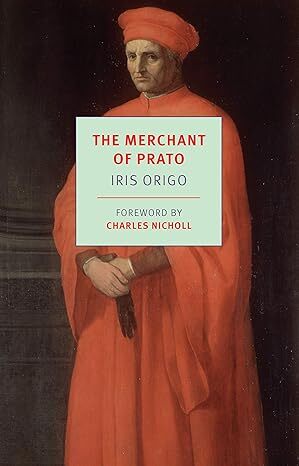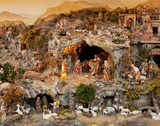Who Was The Merchant of Prato
Who Was The Merchant of Prato
People often ask me why I named my business “The Merchant of Prato”. Well, I am a lover of history and have my Master’s degree in Medieval Studies. An influential businessman lived during this time and he has come down in history as the Merchant of Prato. His name is Francesco di Marco Datini and he lived during the 1300’s in the Tuscan town of Prato, which is about 8 miles northeast of Florence, Italy. He was an important merchant who is created with implementing the first partnership system in business in the year 1383.
Datini was one of four children of Marco di Datino and Monna Vermiglia, who, along with two of their children, both died as a result of the Black Death in 1348.
At the age of 13, Datini became employed as an apprentice to a merchant in Florence. In 1358, he joined a group of merchants who were going to Avignon, France, the city to which the papacy had moved at the time. King Philip IV of France was instrumental in securing the election of Clement V, a Frenchman, to the papacy in 1305. This outcome was very unpopular in Rome, where factionalism made Clement's life as pope unbearable. To escape the oppressive atmosphere, in 1309 Clement chose to move the papal capital to Avignon, where he would be under the protection of the French king. Avignon would be the Papal Seat until 1378 when it was relocated back to Rome.
Datini resided in Avignon until 1382. Initially he was an arms trader, which was quite profitable in Avignon especially during the Hundred Years' War (1337-1453). Then he became a supplier of luxury goods and art for the wealthy cardinals residing in Avignon. The works of art that these figures bought were some of the first consumed for private, non-religious use. Before this time, the church had been the primary patron of the arts. Towards the end of the 14th Century, the papacy and other pious individuals commissioned religious artwork, and Datini’s merchant skills were sought after.
In 1376, Datini became engaged to Margherita Bandini, a young lady who lived in Avignon. In 1382, the couple returned to live in Prato in 1382, where Datini's business continued to grow. In 1386, he moved to Florence, where he stayed until his death in 1410.
Datini would spend long periods of time away from Prato where his wife continued to live. The two frequently communicated by letter and these letters have come down to us. These letters give us insight into their marriage, their personalities and the nature of Datini’s, and Margherita's management of the household. Datini returned to Prato in 1410 where he died.
Datini is buried in Prato at the church of San Francesco. He died with no male heirs, so he left his fortune to a charitable foundation established in his name, the "Casa del Ceppo dei poveri di Francesco di Marco," to assist the poor which still exists today.
Datini life would most likely have been lost to history but in 1870, 500 of his business account books and 150,000 papers and letters relating to Datini's business were discovered in a stairwell of the couple's palace in Prato. These papers provide us with valuable insight into both Datini's business as well as the Medieval merchant class which existed in the fourteenth and fifteenth centuries. Datini’s records give us valuable insight into the beginnings of the modern commercial world which were developing during his time and to daily life during the medieval error.
“For God and Profit” is how the medieval merchant Francesco di Marco Datini headed a notebook in which he kept track of his business dealings, and these were certainly his guiding lights.
Author Iris Origo translated and extracted Francesco di Marco Datini letters and writing and composed a wonder book on him called The Merchant of Prato.








